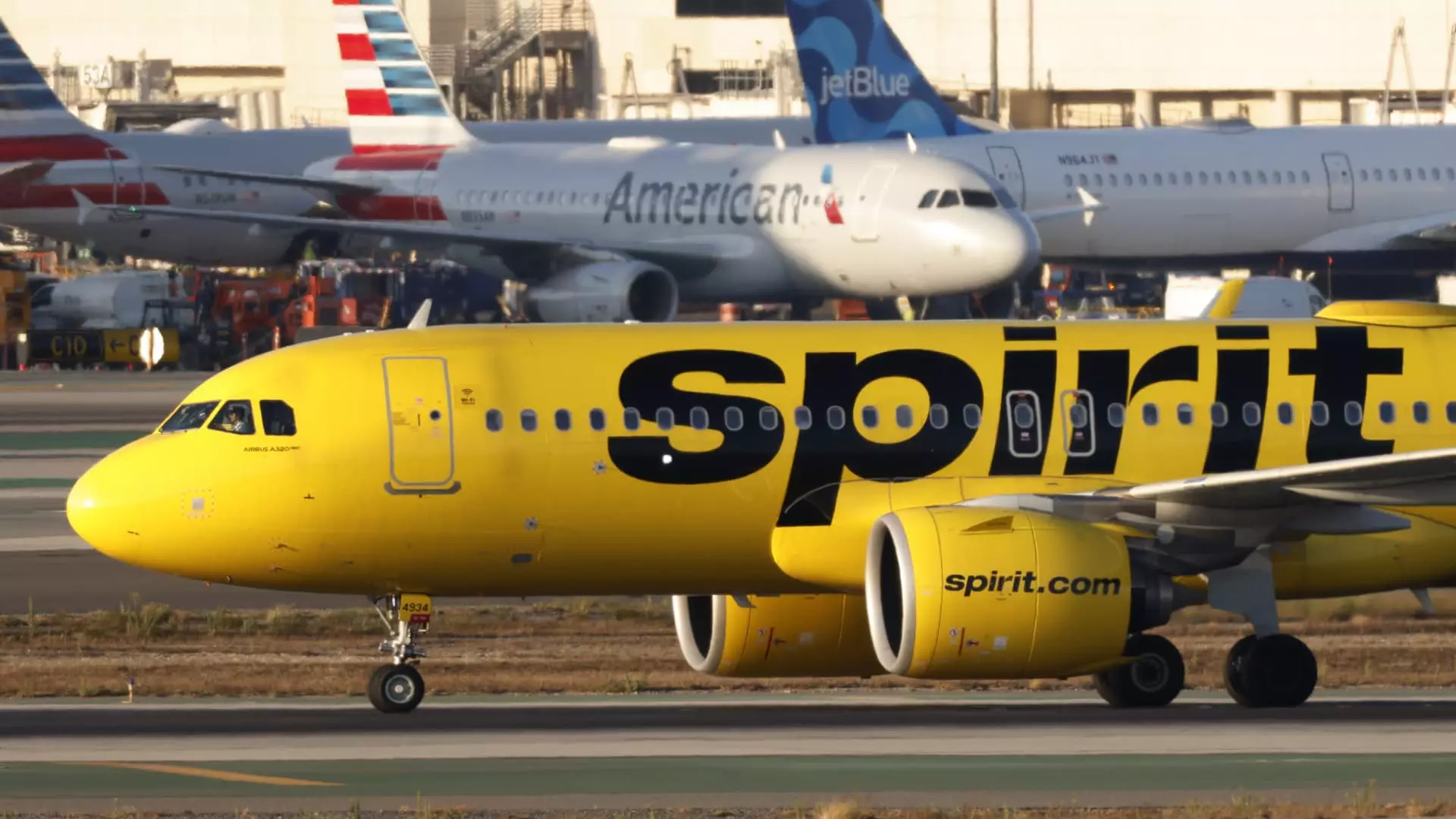Spirit Airlines finds itself at a pivotal crossroads, grappling with financial instability that demands swift and decisive action. The company’s recent announcement of further job cuts and capacity reductions reveals the magnitude of its current struggles. Unlike larger rivals that have the resources to weather economic storms, Spirit’s aggressive reshaping signals an understanding: survival depends on radical internal reforms, not mere incremental adjustments. The airline’s decision to plan a 25% capacity cut for 2024 is not just about trimming the fat; it’s a statement that the transportation landscape is fundamentally shifting, and only the leanest, most focused airlines will thrive.
What’s clear is that the airline’s second bankruptcy within a year underscores systemic vulnerabilities. The combination of unanticipated costs, a retreat from the strong growth phases of the past, and relentless market competition have created a perfect storm. Spirit’s efforts to align its fleet and operations to core markets indicate a stark acknowledgment: the old model, characterized by rapid expansion and aggressive pricing, is no longer sustainable in today’s turbulent environment.
Strategic Restructuring as a Necessary Evil
Leadership’s frank communication about workforce reductions highlights a brutal but necessary phase of reorganization. The company’s negotiations with unions, furloughs, and potential layoffs aren’t just HR tactics—they’re tools for recalibration. This period is set to be painful, especially for employees who have already faced demotions, unpaid leaves, and uncertainty. Yet, from a strategic perspective, this is a conscious effort to create a more agile, cost-efficient operation.
Spirit’s approach reveals a stark understanding that a leaner fleet—possibly fewer aircraft, fewer destinations, and a more targeted network—will enable it to better withstand future shocks. The carrier is reassessing its core competencies and market segments, aiming to eliminate low-yield routes and focus on regions where it can compete profitably. This inward-looking focus, although disruptive in the short term, could be the only viable path toward sustainability in a fiercely competitive arena where scale and efficiency determine survival.
The Power Struggle: Balancing Growth, Costs, and Market Share
The airline’s setback isn’t solely due to internal missteps but also external factors—shifting traveler preferences, increased competition from giants like United, Frontier, and JetBlue, as well as the fallout from a failed acquisition attempt. The aftermath of these issues has left Spirit scrambling to defend its market share, even as bigger carriers expand and capture more of the budget traveler segment.
Historically known for its low fares, vibrant branding, and fee-driven model, Spirit’s margins have been squeezed harder than ever. Its recent financial reports, including a staggering $257 million loss since March, lay bare the gap between aspirations and reality. The company’s decision to cut destinations and hold back on planned expansions reflect its strategic pivot—prioritizing financial health over growth at all costs. However, this pivot raises an important question: at what cost does resilience come? How will Spirit maintain its brand identity and customer loyalty during this tumultuous period?
Future Outlook: Resilience or Collapse?
Spirit’s current trajectory is a high-stakes gamble. The airline is betting on restructuring, cost-cutting, and sharpened market focus to forge a new path forward. Yet, the road is fraught with uncertainty. The cooperation (or resistance) of unionized staff, the ability to renegotiate lease and vendor terms, and the competitive response from domestic airlines all play critical roles in determining the airline’s future.
What’s compelling—and perhaps most concerning—is the fact that Spirit’s leadership appears to understand the gravity of the situation. The blunt acknowledgment of impending layoffs and capacity cuts signals a mature, if harsh, strategy to confront the reality rather than ignore it. The question remains whether this calculated austerity will be enough to transform Spirit from a financially fragile player into a resilient, profitable entity.
In an industry where agility and cost discipline are paramount, Spirit’s bold but risky bet hinges on the belief that a smaller, more targeted operation can efficiently win back profitability amidst adversity. Whether this strategy will ultimately succeed or lead to further decline remains to be seen. But one thing is certain: Spirit Airlines is no longer just a low-cost carrier; it is a case study in survival, resilience, and the brutal necessity of reinvention in a cutthroat marketplace.


Leave a Reply